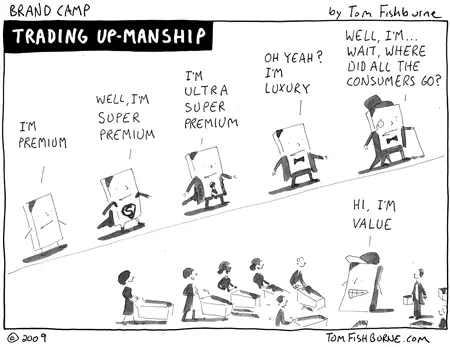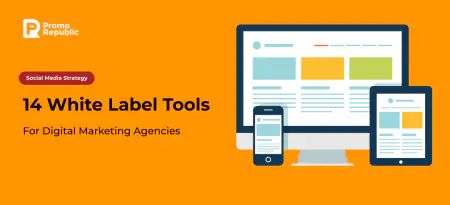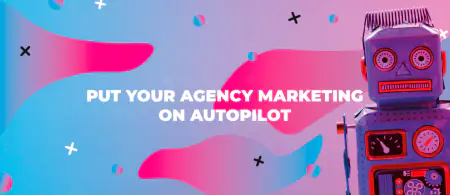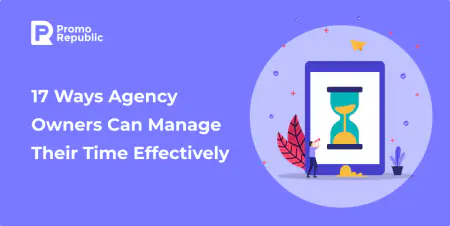How Agencies Should Choose The Right Pricing Model
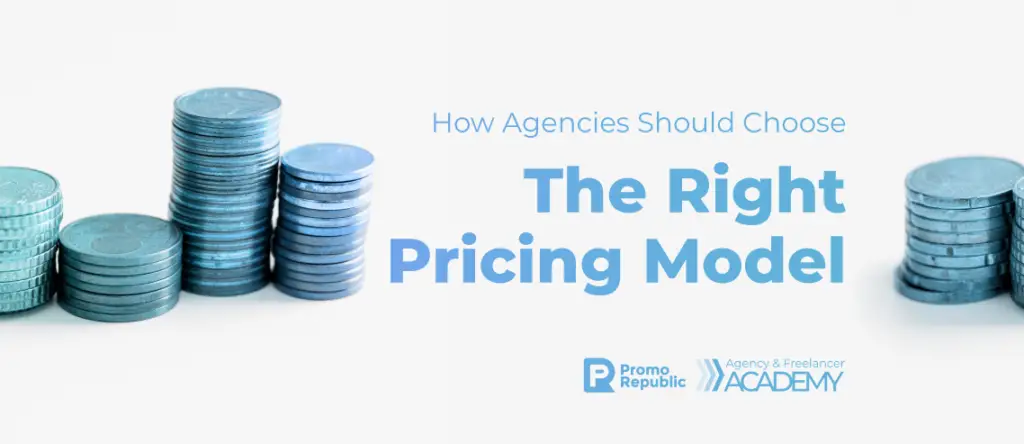
There are many agencies. Well, there is a great number of agencies. But they all have one question in common: should the services be affordable or exclusive from the client’s point of view?
It seems that the answer is in the runoff. There is no doubt most agency owners want their services to be perceived as exclusives. However, it is very difficult to position your company as an exceptional quality service provider. This requires a lot of effort, as well as remarkable dedication.
When it comes to agency valuation, you should analyze the financial, organizational, and technological activity of services you suggest, and draw conclusions about the development prospects. That helps you determine the future position of your agency on the market and among the competitors. With this knowledge, you have a better chance of setting up the right price and avoid becoming a victim of Dunning–Kruger effect when people with the lowest ability in a subject rate themselves as most competent, compared to others. At the same time, the question of cost may sound like “Why is it so expensive?” or “Why is it so cheap?”.
There are different ways your clients can pay for your product or services, and, it must be said, there is no right or wrong pricing model, each has its own pros and cons.
Let’s take a look at the main three pricing models and find out how to choose the right pricing model to help you take your agency to grow.
#1 Hourly-rate pricing model
The first agency pricing model, as it should be, is the simplest. With this model, you set an hourly rate and charge your client for every hour worked.
“The key things you need for successful hourly pricing is discipline, documentation, and communication”, says Bread Weaver.
This will only work if your client can track all data related to the project. You have to give your client an opportunity to constantly control your time and expenses.
This approach is best for those who do not work directly with clients, for example, freelancers who work for an advertising agency. In addition, the model can be applied in any work involving sophisticated technologies, such as software development.
There are several criteria by which it can be determined that an hourly rate model will suit your agency:
- A freelancer or agency regularly works with the same client on similar tasks;
- The result of the work is not defined;
- Project scope has changed several times by the request of the client;
- You’re responsible for complex technical work.
#2 Fixed-free or project-based pricing model
Project-based pricing is the second most simple model, which can also be used in tandem with the hourly model. In this case, you charge your client for the project.
The idea is the following: the client asks you how much a site development costs, and you tell them $ 4,000. So much you get for your work regardless of the time spent or cost involved. The main disadvantage of this approach is that employees often underestimate potential efforts and costs. Then they face unexpected challenges that lead to loss of profits or little unpleasant conversations with a client.
Such a pricing model can be good if you are able to estimate the timeline of work, many of us do not know how to do this.
For the clients, it’s something like test-driving. They can try you out before the signing of a long-term project.
#3 Value-based pricing model
With this model, your clients pay for the value you bring to their company.
This strategy is used in the Nine Labs agency. The idea is that customers pay for how satisfied they are with the result of the work. “They aren’t paying you for your time; they’re paying you for solutions”, said Brad Weaver, their ex-CEO.
And these solutions for one company may turn out to be more valuable than for another. In order to apply such a method, it is necessary to establish a special relationship with the client.
The strategy is based on three components:
- Price of Solutions in the Market
You should determine in which market your work, and find out how much other freelancers or agencies working in the same market with clients request for their work. You get this information in several ways: ask your colleagues, communicate with customers at various events and find out how much they paid, or monitor blogs and profile publications.
- Service Record
Your experience affects how much you can request from a client. Experts get more, newbies get less.
- Perceived value
Very often customers ask why your work costs more than the work of your colleagues in the market. “There are ways to quantify value, but the mentality has to change from what the client values to the client valuing you and your expertise. This means you have to demonstrate expertise, competence, and the ability to quickly understand their problems ”, comments Brad Weaver for Creative Bloq.
A Word About The Pricing Mistakes
When it comes to the typical mistakes people make about setting up the pricing, Dylan Hey, CEO and Founder of HeyDigital, thinks, “We spend so much time on promoting businesses, spend so much time on marketing strategies, hiring people, spend on thinking about positioning, but we rarely notice the mistake we make when choosing the right pricing”.
Since many mistakes were made before you even started to think about pricing, some bad traditions were caught on. Dylan analyzed them all and identified the main 5 errors which are still quite frequent in the agency area.
#1 Mistake – Setting and Forgetting Pricing
Mostly, agencies do not change the pricing models.
- Don’t treat pricing as an afterthought, it should be a core competency
- We spend so much time thinking about sales and marketing for our businesses, why is pricing not thought about as much
- Make sure to frequently revisit your pricing strategy
#2 Mistake – Not Experimenting with the Pricing
- When was the last time you experimented with your pricing?
- Introduce some different packages, switch up the price point, A/B test.
- Even companies that regularly check in on their pricing often don’t experiment to figure out what their customers want, and what they’re willing to pay, in order to make changes.
Think of what your customer really wants and what they are ready to pay for.
#3 Mistake – Too Many or Too Few Options
- Too many options can confuse your buyers and give them more reasons to become picky
- Too few options can only capture certain points along the demand curve, you may be underselling yourself.
#4 Mistake – Discounts
- How many of you offer them?
- Once you condition your customers to expect discounts this conditioning is very difficult to reverse.
- If you must offer a discount, make sure you benefit in return.
Don’t use discounts all the time because then you undervalue your cost, your prices.
“The maximum discount I made was 10% off”, shares Dylan.
A Word About RATER Model
How can you evaluate the quality and the level of service that you provide to your customers? There is no right wrong way. There is no silver bullet. This all comes with testing.
You can put together a focus group and conduct a customer satisfaction survey. Also, you can look at the number of complaints and analyze all the time you need to solve them. You can ask a guru, a pundit, or even a glass ball. All of these, of course, good ways for those who love spending time on long-term tests, but they still do not guarantee the accurate results.
There’s a common knowledge that sometimes we do not need to reinvent a wheel in terms of basic business and marketing research. In the case of evaluation, the RATER model may be useful. This method helps to identify those areas that you need to focus on to ensure a high level of service.
The model was developed by professors Valerie Zeytaml and Leonard Berry and it was published in the book “Delivering Quality Service” in 1990.
This model identifies five key elements that are worth paying attention to when providing the service:
- Reliability
It is your ability to provide a service on an ongoing basis, efficiently and on time.
- Assurance
Skills, knowledge, and skills of staff; their ability to use their knowledge and apply experience in order to inspire customer confidence.
- Tangibles
Physical evidence of service. These can be the offices, equipment, workers, and communication tools you use.
- Empathy
The relationship between team members and customers.
- Responsiveness
Your ability to provide fast and quality service to your customers.
How to use RATER
To use the RATER model, apply Gap Analysis. To do this, define the following elements:
- Future state
What do you want to achieve?
- The current state
Where you are now?
- Following actions
What actions need to be taken to move from the current state to the future?
Then, you need to use these questions for each of the five elements mentioned above:
For Reliability:
- How well and efficiently do you provide the services you promise the consumer?
- Are your systems and processes strong and reliable?
- Is the provision of services happening continuously and on time? This applies to both the physical world and online.
- How exactly can you improve the quality of service?
While making this step in your research you can use PromoRepublic for agencies. It has the Social Monitoring feature that allows you to see all your client social media profiles and always know what people say about your client.
For Assurance:
- Does your staff have the necessary knowledge and skills to provide good service?
- Do your people need further training?
- Does your staff inspire customer confidence?
- Are your services safe?
For Tangibles:
- Where can a client see material evidence of your professionalism? These can be products, packaging, marketing materials, office, the appearance of staff members. How attractive is this?
- How useful is your website’s FAQ, how comprehensive and timely is it? Can people get information if the site is temporarily unavailable?
- Do you provide information through social media? Do you have a twitter, a group in Facebook and other online services?
- Is there physical and virtual evidence of your company’s brand?
For Empathy:
- Can your people build good customer relationships?
- Do your people know how to express their thoughts clearly and clearly?
- Does your staff show empathy? Is he aware of its importance and significance?
- Are your people really worried about customer needs?
- Does the staff look at the situation from the client’s point of view?
For Responsiveness:
- Do you provide fast service? How easy is access to it?
- Are you able to quickly and quickly handle complaints and feedback?
- Do your staff have all the resources to provide a quality service?
- Can you solve the problems of your customers?
- When you establish your current state and outline the future, it is important to notify your customers. They should be aware of what to expect from you
Now when you know the pros-and-cons you have everything you need to become an accurate pricing model expert and price the services of your agency before the clients do.

